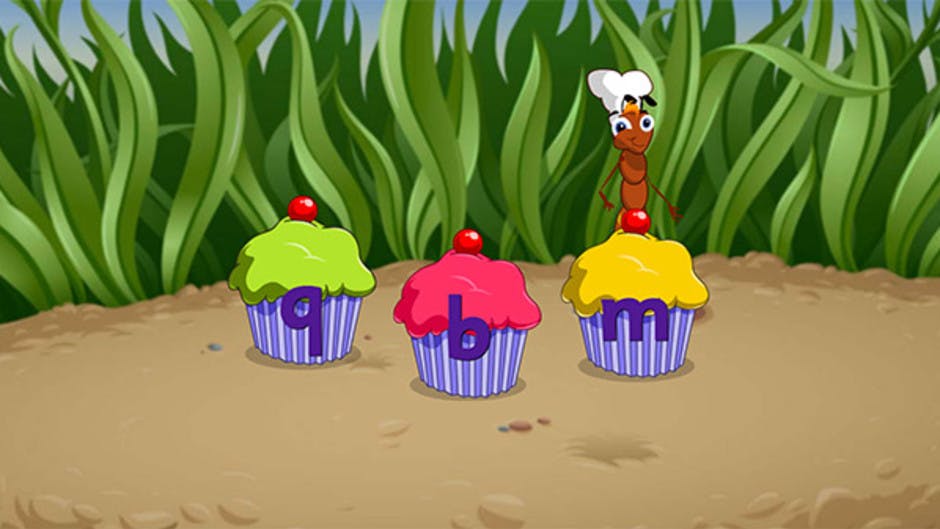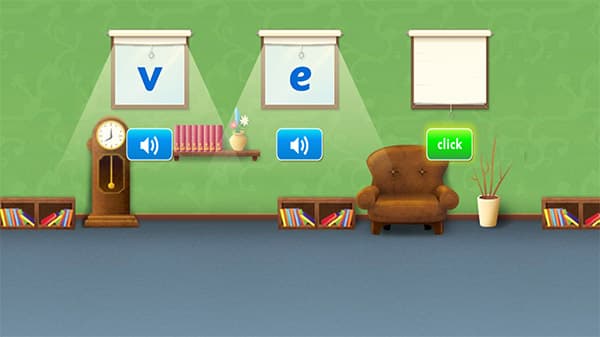


Synthetic Phonics

Reading Eggs uses a synthetic phonics method to teach children how to read. Learning is made fun, easy and highly intuitive for young kids. Free trial
What is synthetic phonics?
Synthetic phonics is a method of teaching where words are broken up into the smallest units of sound (phonemes). Children learn to make connections between the letters of written texts (graphemes, or letter symbols) and the sounds of spoken language. Synthetic phonics also teaches children how to identify all the phonemes in a word and match them to a letter in order to be able to spell correctly.
Children are taught how to break up words, or decode them, into individual sounds, and then blend all the way through the word.
Example: In the word bat, children learn to identify three individual phonemes using the synthetic phonics method: /b/ /a/ /t/ that can be blended back together to produce a word. The ‘synthetic’ part of this particular phonics instruction derives from the process of synthesizing or blending sounds to create words.
New sounds are not introduced in alphabetical order, and they are introduced quickly. Synthetic phonics means that children are able to read a range of easily decodable words sooner.
This means that if a child is introduced to the sounds /m/ /s/ /a/ /t/ they can quickly read the words at, mat, sat, am, Sam etc.
Synthetic phonics vs analytic phonics
There are two main types of phonics: synthetic phonics and analytic phonics. The difference between them is substantial enough to affect the gains in literacy that young readers make.
Synthetic phonics is a more accelerated form of phonics. Children are taught letter sounds upon starting school, before they learn to read, and even before they are introduced to books.
With analytic phonics, children are taught to recognize whole words by sight, and later to break down the word into the smaller units of sound. Letter sounds are taught after reading has begun. The uncertainty is how much later this knowledge of letter sounds will follow. It does not always follow that children will be able to pick up these skills using analytic phonics. With analytic phonics, children differ widely in their ability to pick up all the implicit rules of the English alphabet.
Of course, the use of synthetic phonics does not exclude the use of analytic phonics. There are some words that cannot be learned by breaking them into smaller parts and children must learn them by sight. These are often referred to as ‘sight words’.
How Reading Eggs teaches synthetic phonics
The Reading Eggs program focuses on a core reading curriculum of synthetic phonics and sight words. Additionally, it builds vocabulary, fluency and comprehension.
The program comprises highly structured, systematic and sequential skills-based lessons and activities that match an individual letter, or letter combination, with its appropriate sound. Children are taught to blend sounds all the way through a word in order to read it, as well as how to spell. They learn this through a variety of fun and interactive games and activities.
Reading Eggs introduces the technique of reading words from left to right and blending all the way through the word from the very first lesson. ‘Sound Buttons’ are introduced in the early stages of the program to encourage children to make letter-sound correspondences and to teach them how to blend individual phonemes to read words.

Reading Eggs teaches children how to hear individual phonemes and blend them all the way through to create a word. Free trial
Early lessons and activities help children to identify how many phonemes they can hear within a word. Other activities prompt them to listen to individual phonemes and to identify the initial, middle and final sound within the word.
Building on from initial phonemic awareness and simple letter-sound recognition, children learn how one phoneme can sometimes be represented by two or more letters, such as /sh/ or /igh/. It also shows children how a single phoneme can be represented in several ways, such as /ee/ as in see, /ea/ as in sea, and /ie/ as in field. Children also learn how a single letter can represent more than one phoneme, such as /o/ in go, and /o/ in top.
See how Reading Eggs works with a free trial now.


